Look at Part1 here
3- Ista’ala / tafkheem (elevated)
- During pronunciation, the back of the tongue is raised towards the upper palate. This will produce a thick, round sound.
- These are known as full mouth / thick letters and are thus pronounced with a full mouth
- The quality of ist’ala is found in the following seven letters which are called musta’liyah (خص ضغط قظ)
- These seven letters are also known as the letters of tafkheem (Heavy letters)
- For ista’ala the tongue is just RAISED, whereas for itbaaq it actually makes contact.
- The elevation is less when these letters carry a ( Kasra )
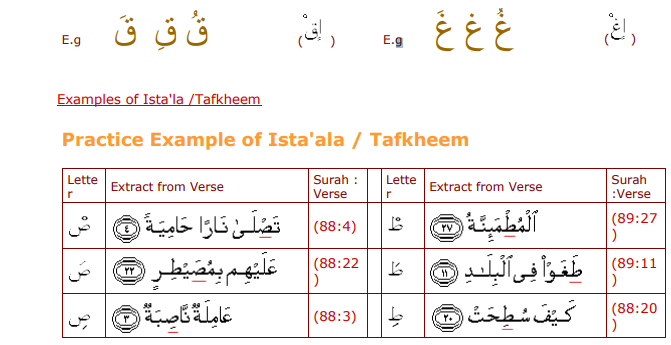
– Istifaal(opposite to Ista’ala) الاستفال
- Definition: the lowering or depressing of the back of the tongue away from the roof of the mouth upon pronunciation of the letter.
- During pronunciation, the tongue is not raised, but kept downward in its normal position. This downward position will cause a flat sound.
- These are also known as empty-mouth / thin letters and are thus pronounced with an empty mouth.
- The quality of istifaal is found in the remaining letters which are called mustafilah.
SIFAAT Online Course-Arabic teachers
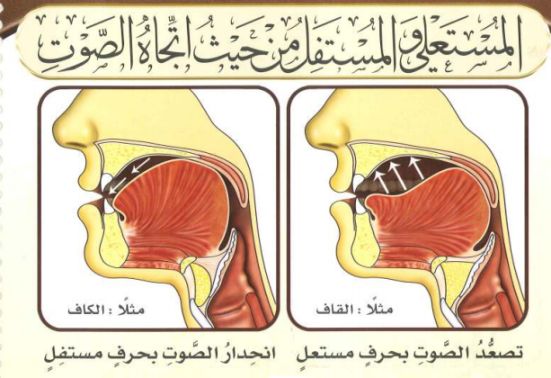
4-Itbaaq (closed) الاطباق
- Definition: contact between the back of the tongue and the upper palate of the mouth.
- This characteristic is necessary no matter what harakaat (not just when it carries a sakoon).
- The quality of itbaaq is to pronounce in a closed and covered manner. That is, during pronunciation, the tongue is elevated to such an extent that it covers the palate and the mouth remains nearly closed
- Note: these letters also have Isti’laa.
- The quality of itbaaq is found in the following letters which are called mutbaqah ( ص ض ط ظ)
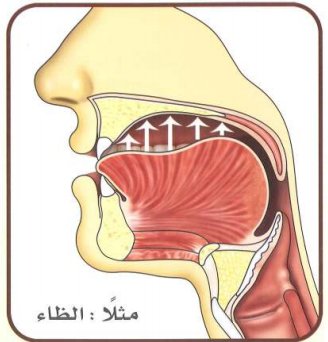
SIFAAT AL HUROOF(The Letters) PART-1
Infitaah (Opposite to Itbaaq) الانفتاح
- Definition: separation of the tongue from the upper palate, thus pronouncing in an opened manner.
- The quality of infitaah is to pronounce in an opened manner. That is, during pronunciation, the tongue does not cover the palate and the mouth remains open.
- The quality of infitaah are found in the remaining letters and are called munfatihah .
- Notes: Letters have Isti’laa and Infitah characteristics three letters ( غ خ ق ) Letters have Isti’laa and Itbaaq characteristics four letters: ( ص ض ط ظ ) So letters of Isti’laa and Itbaaq more heavier than letters have Isti’laa and Infitah.
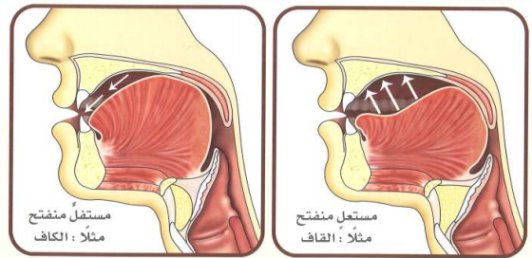
5-Idhlaq الاذلاق
- Definition: the speed of which the letters are pronounced because of the ease of the makhraj.
- The quality of ithlaaq is to pronounce in a smooth and easy manner.
- The quality of ithlaaq is found in the following letters which are called mudhlaqah : (فر من لب)
- The area of pronunciation of these letters, that is, the edge of the tongue or the edge of the mouth namely the lips, can be considered as factors contributing to the smooth and easy manner of pronunciation.
Ismaat (opposite to ithlaaq) الاصمات
- Definition: to pronounce in a heavy manner. .
- During pronunciation, a certain amount of effort is required..
- The quality of ismaat is found in the remaining letters which are called musmatah .
- Note: Both of these characteristics do not have any effect on one’s recitation. However, they are a linguistic point. Due to this, not all Tajweed books include these two Sifaat..
Put any question in comment
Our Blog
Our Courses




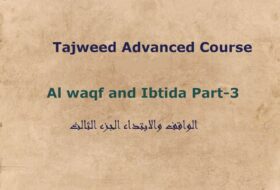



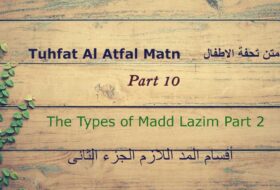
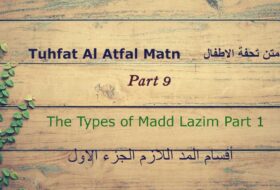




Comments